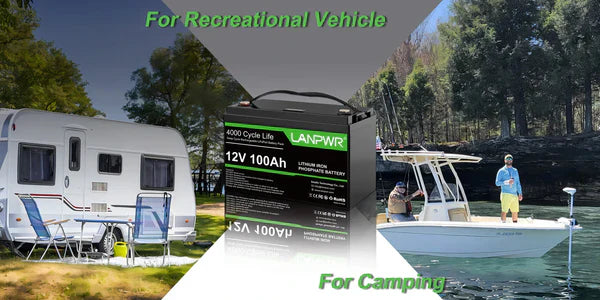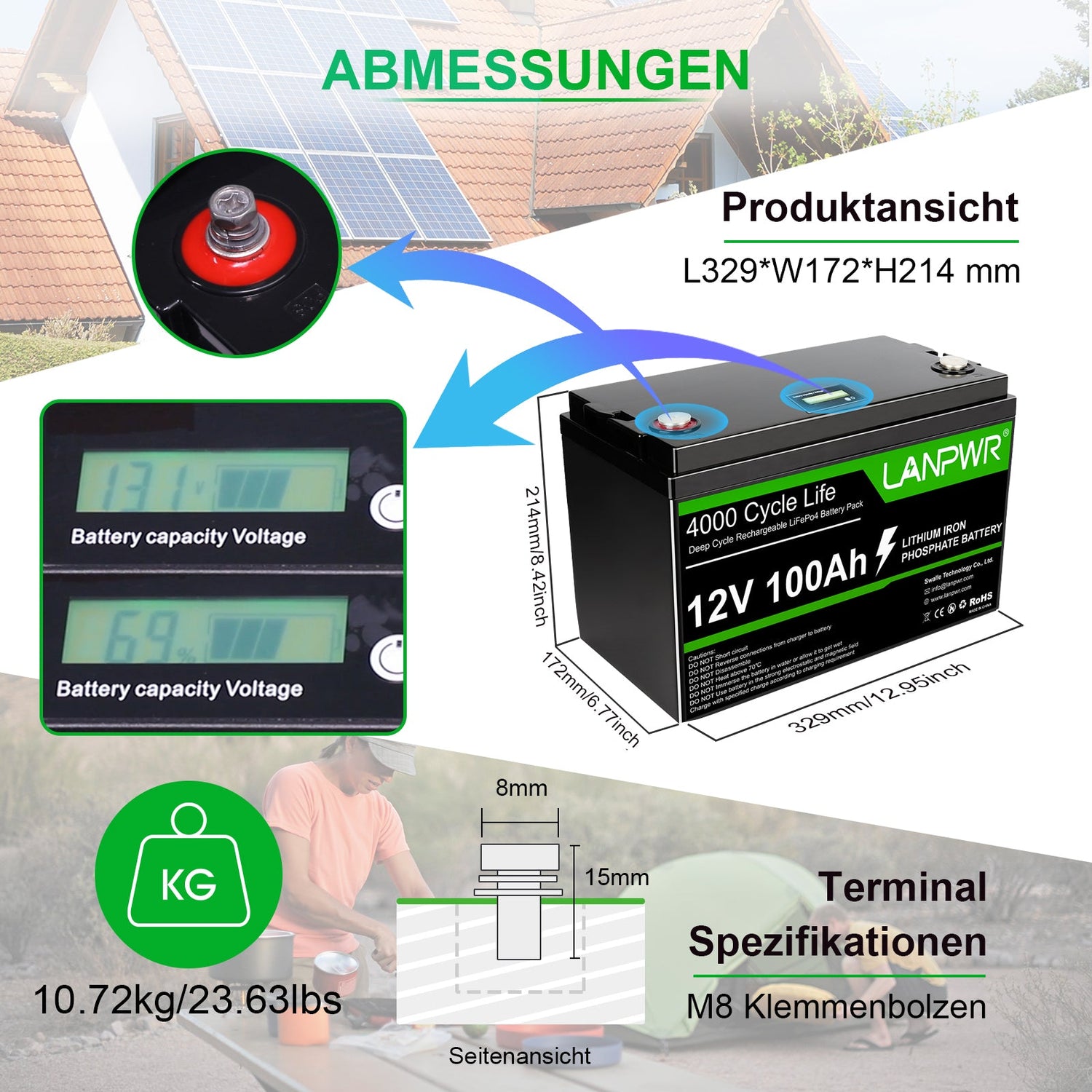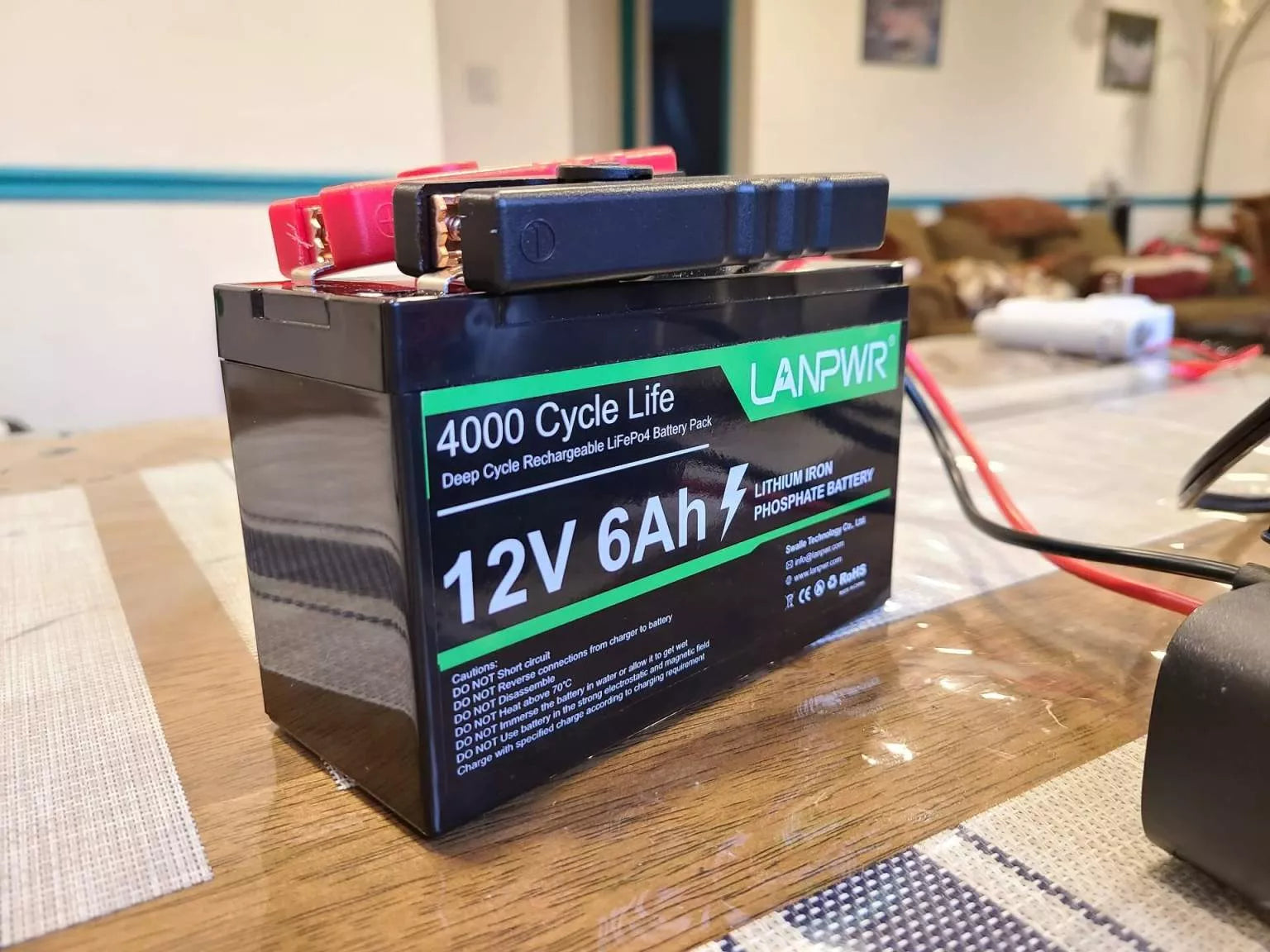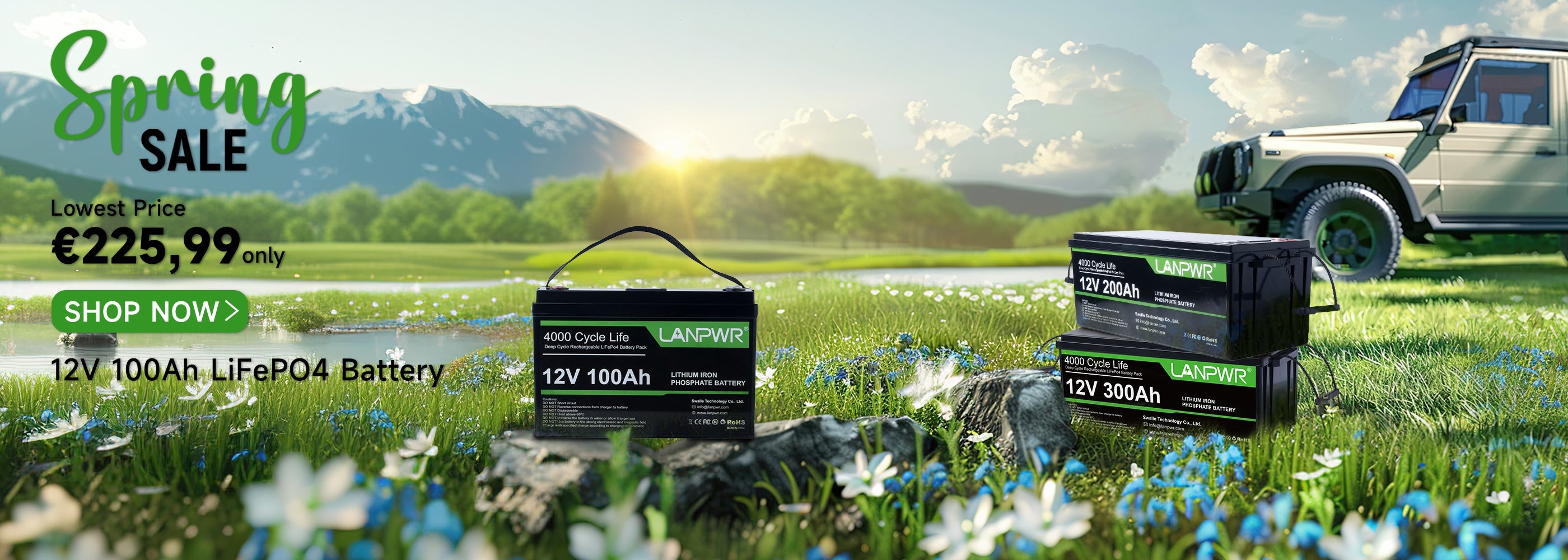Lithium iron phosphate (LiFePO4) has been one of the most popular candidates for a solid alternative reproducible battery, with certain properties having improved safety and service life over other lithium-ion batteries in general. This particular article will provide you with critical information about Lithium Iron Phosphate batteries or LiFePO4- including the chemistry, as well how they compare to other lithium-ion models, and also insights on when it would be best for them.
What is the LiFePO4 Battery Chemistry?
LiFePO4 – Lithium Iron Phosphate, Battery Cathode Chemistry What does that mean exactly? Common in e-bikes, these batteries are different because they utilize iron phosphate (or lithium iron) instead of cobalt/nickel/manganese. This formula is a culmination of several pros like increased safety, stability, and multiple others.
How do LiFePO4 Batteries work?
The LiFePO4 batteries are powered in the same way as other lithium-ion chemistry-based cells. They are made up of anodes, and cathodes. Electrolyte and a separator A charged battery releases energy as lithium ions travel from anode to cathode across a chemical path between the two electrodes known as an electrolyte. But in charging this process simply works the other way with ions shifting their negative electrons back to the anode for charge storage when required.
Key Components
Anode- typically Graphite in a pouch cell, this is the part of the battery that carries Lithium ions when charged.
Anode: Made up of Lithium Iron Phosphate positive electrode, electrical discharge while giving out lithium (Li) ions.
Electrolyte- Allows Lithium ions to travel from the anode, across the electrolyte, and then back through again into cathodes.
Separator-It will not allow the anode and cathode to be in contact so that only requires ions into the Electric solution.
Benefits of LiFePO4 Batteries
Safety
Among them, the LiFePO4 battery is the safest of Lithium-ion batteries. One reason is that lithium iron phosphate has a chemistry which, while not energy dense as the cobalt oxide used in cells by most electric vehicles today, also tends to be less thermally reactive and far easier to suppress once thermal runaway begins. Now, these characteristics combined with their natural thermal stability (which slows down the risk of them catching fire) make IDFs very suitable for high safety demand applications where you can not afford any negligence to maintain them in stable conditions like electric vehicles or home energy storage systems.
Longevity
One of the greatest advantages of LiFePO4 batteries is their lifespan. They can handle thousands of charge-discharge cycles with little degradation in their performance. According to Musig, LiFePO4 battery life is usually certified according to 5-10 years under average consumption patterns.
High Efficiency
LiFePO4 batteries have very diffusive charging and these offer between 95%- almost full charge energy efficiency with about minimum self-discharge. This Li-ion battery technology was already patented before the year of the 2000s itself. That also means they suffer fewer energy losses during charging and discharging that plague most other types of batteries.
Environmental Impact
LiFePO4 batteries are known to be cleaner compared with the rest of lithium-ion battery technologies. That is because they contain no cobalt, or other heavy metals, which makes recycling very straightforward and also reduces the toxicity of these magnets by an order of magnitude.
Performance
Regardless of the discharge cycle, these batteries will deliver a constant voltage output. They also feature high current capability, which means they can deliver a great deal of power very quickly.
Low Self-Discharge Rate
The self-discharge rate of LiFePO4 batteries is small, about 2-3% per month. Cobalt blended batteries from Panasonic are ideal for applications like drills where a battery is needed to hold its charge while sitting on the shelf.
Cons of LiFePO4 batteries
Energy Density
The main disadvantage of LFP batteries is that their energy density [watt-hours per kilogram (Wh/kg)] is lower than other Li-ion battery types. This tells us that as far as mass goes, they store less energy so it does not make much sense to use them when space and weight are a concern.
Cost
LiFePO4 batteries might still be the costliest kind of battery that you just encounter preliminary, notwithstanding costs are coming back down. However, this upfront cost can be amortized by its longevity and efficiency over time.
Cold Temperature Performance
Hard usually appears on LiFePO4 batteries are low temperatures. This can drastically reduce performance and efficacy in freezing temperatures, potentially limiting them, even more, to use cases only in warmer climates or demanding supplementary thermal management.
Uses Of A LiFePO4 Battery
Electric Vehicles (EVs)
With its safety, lithium iron phosphate batteries are used more and more in electric vehicles. They provide the power to make an EV accelerate and are expected to be tough enough for regular rounds of electric recharging.
Renewable Energy Storage
LiFePO4 batteries are very popular among solar and wind renewable energy storage because the production or generation is highest in peak times when power demand goes up as well thus time of day use does add value. The high battery life of low-age ellipsoidal in-home energy storage systems and off-grid power solutions makes them ideal for use.
Marine Applications
MARINE Boats and yachts: Safe, reliable powered LiFePO4 batteries for the water They are also durable enough to withstand exposure to both moisture and salt water.
Industrial Applications
For industrial applications such as factory energy storage and batteries to deliver backup power, then LiFePO4 is an intelligent option. Similarly, they find use in backup power for vital equipment.
Consumer Electronics
Although less popular than lithium-ion batteries in consumer electronics, LiFePO4 is used for high-power applications (e.g. automotive) and other roles where cost is a concern or Hermetic cell construction can allow longer shelf life without degradation of the nickel-cadmium.]
Recreational Vehicles (RVs)
This is something that RV enthusiasts who enjoy off-grid camping - plus everyone else needing a high-powered and dependable source of power can benefit from: the LiFePO4 batteries. It is Temporarily resistant to Deep Discharge and supplies a steady source of power required for smoothly operating numerous systems & devices.
Tips for the Care and Maintenance of LiFePO4 Batteries
Charging Tips
Correct Charger: Use a LiFePO4 charger. Chargers provide the correct voltage and current to ensure a battery is charged in a safe, efficient method.
Charging should not take more than 12 hours, and overcharging can damage the battery life. The charger you use should also have built-in overcharge protection.
Temperature Control: When you are using the battery, try to charge it in a temperature-controlled environment as possible. Never charge in very hot or cold weather as it can harm your battery.
Storage Tips
Partial Charge for Long-Time Storage: If your battery will not be on regular use within 2 weeks or more time, charge the cell cradle about 50-60% of the capacity. Either keeping it charged or completely discharging will kill the battery well before its time.
Place: Store a battery in a place free of humidity from direct sunlight and away from moisture.
Don't Let It Die: If you're storing it for a few months, just make sure InertiaPack is not close to 0%. and if so Give your bag (without the devices) extra pluses every couple of months.
Usage Tips
Avoid Deep Discharge: While LiFePO4 batteries are more tolerant of deep discharges than some other types, we advise not to discharge below 20% SOC as far as possible to extend the service life.
Monitor Your Battery HealthYou can monitor battery health in many ways, and I opt for a monitoring system like this one. A BMS provides This real-time information Voltage Current Temperature State of Charge.
Vent your battery: If Throttled Mid-Flight, use the battery in an opened area or land to cool down.
LiFePO4 vs Other Types In a chart
Types of Batteries: LiFePO4 vs. Lead-acid
Number of cycles: LiFePO4 is rated for 1000 cycles to only a few hundred in lead-acid.
Light Weight: LiFePO4 batteries are much lighter, which makes handling and installation super easy.
Maintenance: Lead-acid batteries require maintenance such as the need to top off water levels and LiFePO4 is almost free from this.
Even the same with efficiency like 120A rate, AC LiFePO4 batteries have the advantage of discharge and battery life performance will not be compromised as a consequence.
LiFePO4 vs. NiCd Batteries
All told: given their lack of cadmium and other toxic metals, the game is also roundly extended to LiFePO4 batteries in terms of environmental win]}
The memory effectNiCd-batteries are sensitive to a phenomenon known as the "memory_effect", which means that its cell loses capacity if they been charged completely or fully discharged out. However, LiFePO4 batteries (and those based on this technology) are immune to swelling problems.
The LiFePO4 Lifespan and Performance- The overall lifespan of the reliability thereby offering a high level of performance throughout.
LiFePO4 vs. All the lithium-ion batteries (LiCoO2, NCA & NMC) Above aLiFePO4 batteries are very safe batteries with a little tolerance to thermal runaway and fire.

Energy Density - At the other end of the spectrum, most lithium-ion batteries have higher energy densities and can be a great choice in applications that need to save space such as portable electronic devices.
Cost & Lifespan - LiFePO4 batteries bucketing in the same general price category of lead-acid can offer many more cycles due to higher depth-of-discharge rates and other requirements under a "typical use" scenario.
Future of LiFePO4 Batteries
Technological Advancements
Detailed study and development are administered in increasing LiFePO4 battery energy density. There may be still gains to be made in efficiency and life with these technology enhancements on the nanoscale or maybe battery management systems.
Growing Market
The demand for safer, more stable, and more efficient energy storage systems is expected to drive the substitution of conventional lead-acid batteries with LiFePO4 lithium-ion batteries. This is expected to increase considerably with demand from not only the power train and electric vehicles but also increasing needs of e.g. industrial sectors where renewable energy storage seems beneficial.
Sustainability
LiFePO4 batteries are rising in popularity as greener energy storage solutions will only be seen more across the market with growing consumer concerns and new regulations. The batteries are sustainable since they can easily be recycled and are highly environmentally friendly when compared to other battery types.
Summary
LiFePO4 battery comes with the safety, long cycle life (2000 cycles), and environmentally friendly benefits of lithium-iron-phosphate technology. The applications range from electric vehicles and renewable energy storage to marine and industrial usage. While admittedly these types of batteries are expensive to purchase, starting mostly empty compared with others and then not holding as many charges for their size or weight, they render a good return on your investment in the long run. However, once businesses and consumers are informed about the chemistry as well as some of the benefits it helps that these LiFePO4 batteries become much more usable with a few simple maintenance practices.














Leave a comment
This site is protected by hCaptcha and the hCaptcha Privacy Policy and Terms of Service apply.